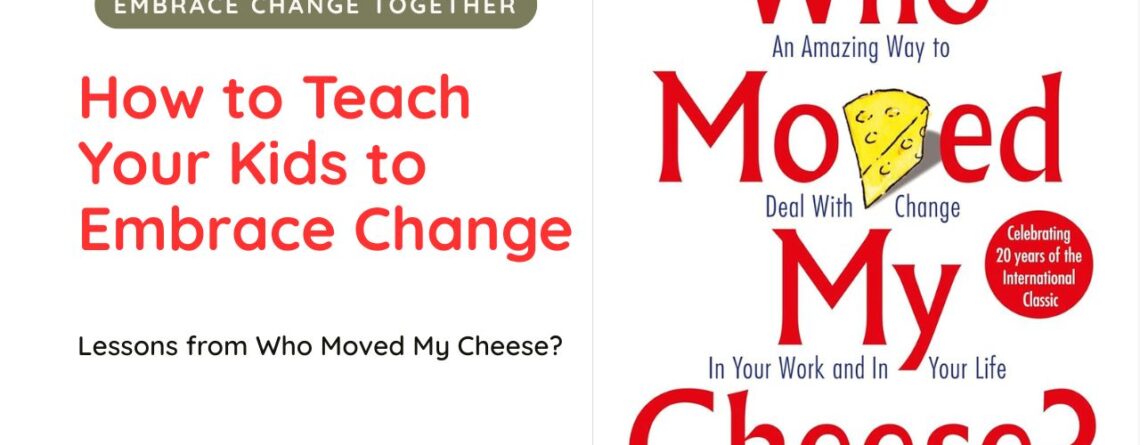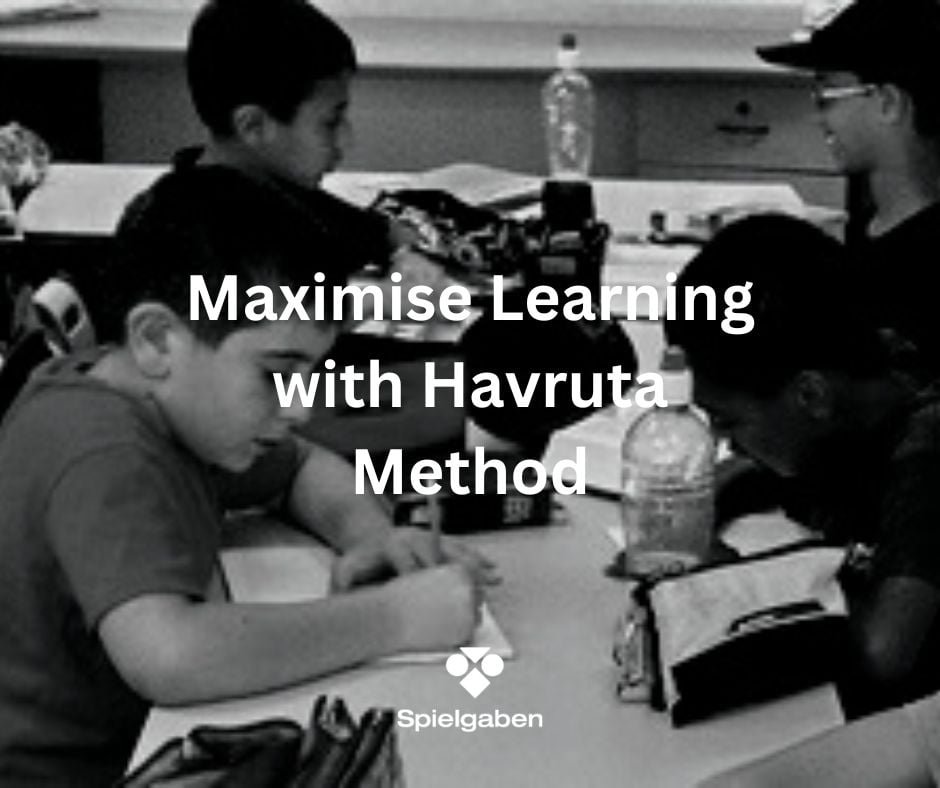Teaching Children to Embrace Change: Lessons from “Who Moved My Cheese?”
As parents, one of the most valuable life skills we can teach our children is how to adapt to change. In today’s rapidly evolving world, the ability to handle transitions—whether it’s moving to a new school, making new friends, or adjusting to family changes—is crucial for emotional resilience and long-term success.
The timeless parable “Who Moved My Cheese?” offers profound wisdom that we can translate into practical lessons for our children. Let me share how you can use these insights to help your child become more confident and flexible when facing life’s inevitable changes.
Understanding the Story Through a Child’s Eyes
The beauty of this parable lies in its simplicity. Four characters—two mice (Sniff and Scurry) and two little people (Hem and Haw)—search for cheese in a maze. The “cheese” represents whatever makes us happy: friends, activities, comfort, or success. The “maze” is the world where we look for what we want.
This metaphor is perfect for children because it’s concrete yet meaningful. You can read the original story together, or simply share the concept in your own words during everyday conversations.
Lesson 1: Keep It Simple—Don’t Overthink
The Mice’s Wisdom: Sniff and Scurry don’t waste time analyzing or complaining. When the cheese runs out, they simply move on to find more.
How to teach this: Help your child understand that sometimes, taking action is better than worrying. When your child faces a problem, ask: “What’s one small thing you could try right now?” rather than encouraging endless analysis of why the problem exists.
Real-life example: If your child is upset about not making the soccer team, instead of dwelling on disappointment, guide them to explore other sports or activities. The goal isn’t to dismiss their feelings, but to help them move forward after processing those emotions.
Lesson 2: Expect Change and Watch for Signs
The Story’s Wisdom: Sniff and Scurry noticed the cheese supply was dwindling, while Hem and Haw were blindsided when it disappeared.
How to teach this: Help your child develop awareness that nothing stays the same forever. This isn’t about creating anxiety—it’s about building realistic expectations.
Practical activities:
- Talk about how they’ve already handled changes successfully: “Remember when you started kindergarten and were nervous? Look how well you adjusted!”
- Point out small changes in everyday life: seasons changing, growing out of clothes, learning new skills
- When things are going well, occasionally ask: “What would you do if this changed?” This plants seeds of preparedness without creating fear
Lesson 3: Let Go of “It’s Not Fair”
The Story’s Wisdom: Hem and Haw felt they deserved the cheese because they worked hard to find it. This sense of entitlement made accepting change even harder.
How to teach this: Children naturally develop a strong sense of fairness, but sometimes they need help understanding that change isn’t about fairness—it’s just part of life.
What to say: “I understand you’re upset that things changed. It doesn’t feel fair, and that’s okay to feel. But holding onto those feelings keeps us stuck. What can we do now to make things better?”
Important note: Validate their feelings first. Never dismiss a child’s emotions. Only after they feel heard should you gently guide them toward acceptance and action.
Lesson 4: Fear Is Normal, But Don’t Let It Freeze You
The Story’s Wisdom: Haw realized that the fear in his mind was much worse than the actual experience of trying something new.
How to teach this: Help your child name and face their fears rather than avoid them.
The “What’s the Worst That Could Happen?” exercise:
- Ask your child what they’re afraid of
- Walk through the worst-case scenario together
- Discuss how they would handle it
- Often, they’ll realize it’s not as scary as they imagined
Example conversation:
- Child: “I’m scared to try the new school.”
- Parent: “What are you most worried about?”
- Child: “That I won’t make any friends.”
- Parent: “If that happened on the first day, what could you do?”
- Child: “I could try talking to someone the next day?”
- Parent: “Exactly! And I bet it won’t take long before you find at least one person to connect with.”
Lesson 5: Visualize Success
The Story’s Wisdom: When Haw visualized himself enjoying delicious cheese, it gave him the courage and energy to keep searching.
How to teach this: Teach your child to imagine positive outcomes in vivid detail.
Bedtime visualization exercise: Before a big change (new school, recital, competition), spend five minutes having your child close their eyes and imagine:
- What they’ll see, hear, and feel
- Themselves handling challenges calmly
- The positive outcome they want
- How proud and happy they’ll feel
Research shows this technique reduces anxiety and improves performance in children.
Lesson 6: Celebrate Small Wins
The Story’s Wisdom: Even though Haw only found small bits of cheese at first, he celebrated these discoveries. This kept him motivated to continue.
How to teach this: When your child is adapting to change, acknowledge every small step forward.
Examples:
- “You talked to one new person at school today—that took courage!”
- “I noticed you tried the new routine without complaining this morning. That shows real maturity.”
- “Even though you were nervous, you gave it a try. I’m proud of you.”
Small celebrations build confidence and create positive associations with trying new things.
Lesson 7: The Earlier You Adapt, The Better
The Story’s Wisdom: The mice moved on quickly and found new cheese while Hem wasted time complaining at the empty station, growing weaker and more depressed.
How to teach this: Help children understand that resisting change only prolongs discomfort.
Use this analogy: “It’s like taking off a bandage. You can do it slowly and make it hurt longer, or you can do it quickly and start healing faster. Which sounds better?”
Real-life application: When facing an unwanted change, give your child space to feel their feelings for a reasonable time, then gently encourage forward movement. “I know you’re sad about moving. You can be sad AND start looking forward to new things. Both feelings can exist together.”
Lesson 8: Past Success Builds Future Confidence
The Story’s Wisdom: Once Haw conquered his fear and moved on successfully, he gained confidence to handle future changes.
How to teach this: Create a “Change Success Journal” with your child.
How it works:
- Record every time they successfully handle a change, big or small
- Include how they felt before, what they did, and how it turned out
- Review it together when facing new changes as evidence they can do hard things
This concrete record becomes powerful proof of their resilience.
Practical Activity: The Cheese Game
Turn the lesson into a family game:
- Set up a simple maze in your home using furniture or tape on the floor
- Hide treats (the “cheese”) in different locations
- Change the location periodically while playing
- Discuss afterward: How did it feel when the cheese moved? What strategies worked? Did you get better at finding it each time?
This playful approach makes the concept tangible and memorable for children.
Age-Appropriate Approaches
Ages 4-7: Focus on the simple story of the mice. Use play and picture books. Keep discussions short and concrete.
Ages 8-12: Read the actual parable together. Ask questions like “Which character are you most like?” Discuss real changes they’re facing.
Teens: Have deeper conversations about identity, goals, and how they handle uncertainty. Encourage them to identify their “cheese” and recognize when it’s time to find new “cheese.”
What to Avoid
Don’t:
- Rush their feelings or say “just get over it”
- Compare them to siblings or peers who “handle change better”
- Punish or shame them for struggling with transitions
- Pretend change isn’t hard or minimize their experience
- Use the story to lecture during moments of high emotion
Do:
- Meet them where they are emotionally
- Share your own stories of handling change (including struggles)
- Be patient—everyone adapts at their own pace
- Celebrate effort, not just outcomes
The Ultimate Message
The most important lesson from “Who Moved My Cheese?” is that change is not the enemy—resistance to change is. When we teach our children to expect change, face their fears, and take action despite uncertainty, we give them a gift that will serve them throughout their lives.
Remember, your child is watching how you handle change. Model the flexibility and resilience you want to see in them. Share your own moments of adaptation, including the fears you faced and overcame.
Change is inevitable, but suffering through change is optional. With these tools, you can help your child not just survive transitions, but thrive through them—finding new “cheese” again and again throughout their remarkable journey.
The next time your child faces a change, ask them: “So, should we be like Hem and stay upset at the empty station, or should we be like Haw and go find new cheese?” That simple question might just change everything.













LEAVE A COMMENT